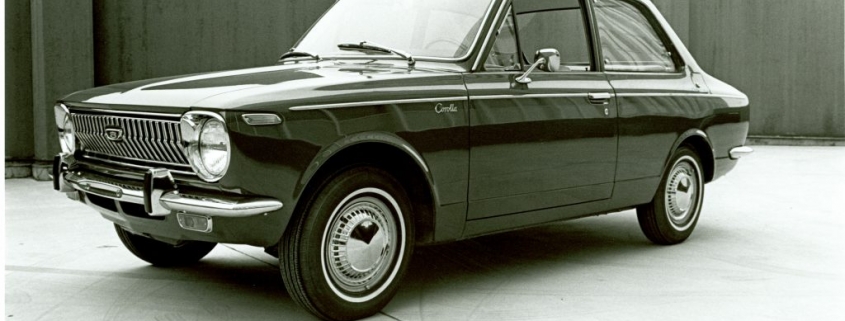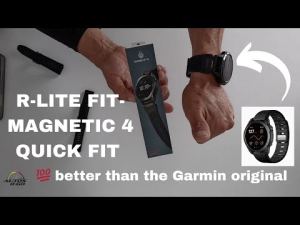Comparing the Original Toyota Corolla to the Original Honda Civic
The Honda Civic and Toyota Corolla continue to battle it out in today’s budget compact segment. But every car has its origin story. And while the Civic and Corolla may be similar today, they weren’t interchangeable back then. So let’s take a deeper dive into these classic cars to see how they impacted Toyota and Honda, and how they’ve changed over the years.
The Toyota Corolla first debuted in 1966
The first-generation Toyota Corolla came out in 1966, far earlier than the Honda Civic did. And while it didn’t come to the states until 1968, this wasn’t Toyota’s first attempt at selling a car here. That title goes to the Toyota Crown, which struggled to handle America’s long, high-speed highways. The Toyota Corolla, therefore, was a rethink.
Toyota aimed for the Corolla to be “a car for the masses.” Something one could not just own, but actually, be proud of. It was quality and affordability paired with prestige and sportiness. To achieve this, Toyota adopted an “80-plus point” mentality. Ranked between one and 100 points, all their cars had to score at least 80 points in every aspect.
The engine is the first example of how Toyota set the Corolla to be a more luxurious option. Japanese cars at the time were most commonly sold with 1.0L engines. That’s why Toyota chose to make a 1.1L engine that made 59 horsepower and later upgraded it to a 1.2L with 67.
And the standard features of the Toyota Corolla were, at the time, considered high-end equipment. Things like a center console, armrests, a heater, and a radio. Today it’s hard to find a car without a radio, but back in the late 60s, it was a hot commodity that really set Toyota apart.
And yet, this was all affordable, at just $1,700 (about $14,000 in today’s money). And at a time when Japan’s economy began to boom, the Corolla became a car for everyone. When it did come to the US, Toyota sold 24,000 of their first-generation Corollas. But that popularity snowballed, with Toyota selling 30,000 second-generation Corollas to the US, and reached a million units sold worldwide.
The First Generation Honda Civic’s CVCC engine debuted at just the right time

Toyota’s success prompted Honda to join in on the action, releasing their own compact economy car, the Honda Civic. But little did they know that it debuted at the perfect time.
If you know anything about the 70s, then you’ve likely heard about the oil crisis. Gas became ludicrously expensive and incredibly scarce. On top of that, emissions regulations became a real concern, forcing automakers to build cleaner cars. This time period, known as the Malaise era, nearly killed the American muscle car, but not Honda.
If anything, the little Japanese automaker known for selling motorbikes thrived in this time period. For starters, the Civic wasn’t built to be affordable luxury, it was built to be cheap. Its 1.4L four-cylinder engine churned out 53 horsepower, it could run on any gas, leaded or unleaded, and got around 35 to 40 mpg.
But the real ace up Honda’s sleeve was the Compound Vortex Controlled Combustion, or CVCC engine. In order to meet emissions regulations, automakers fitted their cars with catalytic converters. But those sucked horsepower from the engine, hindering performance. But the Civic and its fuel regulating technology didn’t need one of those to meet the new standards.
Design News explains that CVCC engines ignited the gas twice: once in a pre-combustion chamber to make the fuel leaner, and again to actually pump the pistons. Eventually, emissions regulations became too low for The Honda Civic’s CVCC engines to meet them. But that initial leg up on the competition got Honda’s foot in the automotive door.
According to Car and Driver, Honda managed to sell 43,119 units by 1974, and then well over 100,000 units in 1975. In other words, the Civic turned Honda into a real automaker.
Would you buy a first generation Honda Civic or Toyota Corolla?

We’ll travel back in time to compare the prices and specs of each, but you should already have a general understanding of which car served which market. The Toyota Corolla aimed for affordable luxury, while the Honda Civic went after budget consumers amidst the gas crisis.
As mentioned, the Corolla cost $1,700 in 1966, about $14,000 today. The Civic, on the other hand, started at around $1,400 in 1972, or roughly $10,000 today. But the Civic was more basic, more simple, and more economical than the Corolla. So if you lived back in the late 60s and early 70s, it’d all come down to how many luxuries you want, and what you can afford.
Today, first-generation Honda Civics are much more readily available than Toyota Corollas simply because they sold better, and for longer. Corollas were sold in the states from 1968 to 1970, whereas the Civic was sold from 1972 to 1979. But whichever you pick, they’re both genuine classics, marking the shift from gas guzzlers to economy cars.
RELATED: Honda or Toyota: Which Car Is Better?
The post Comparing the Original Toyota Corolla to the Original Honda Civic appeared first on MotorBiscuit.







